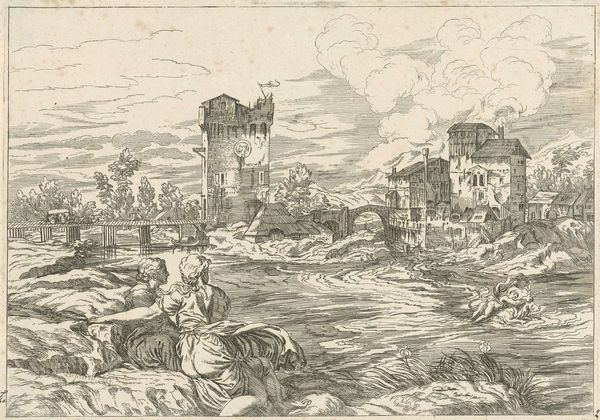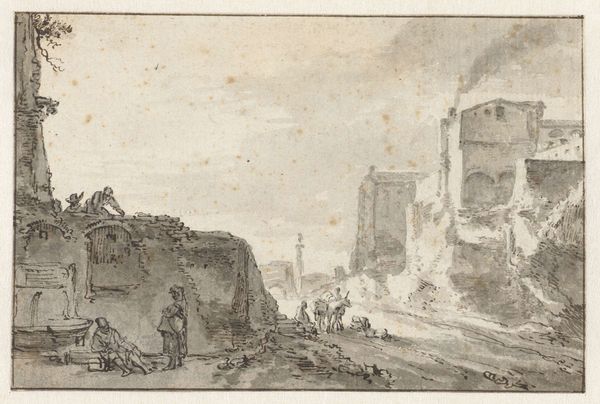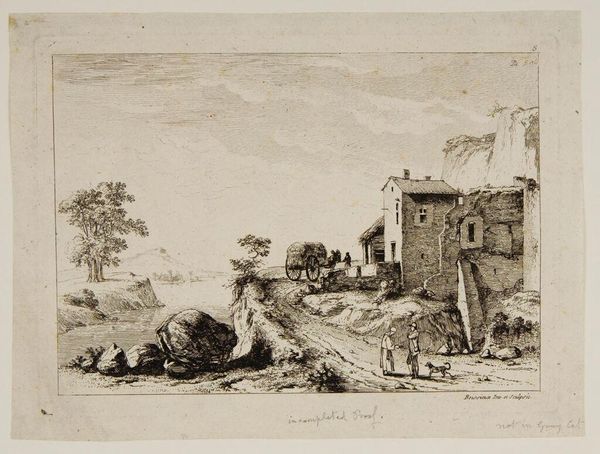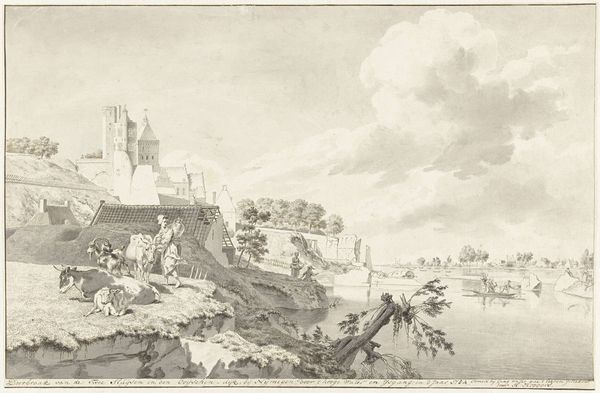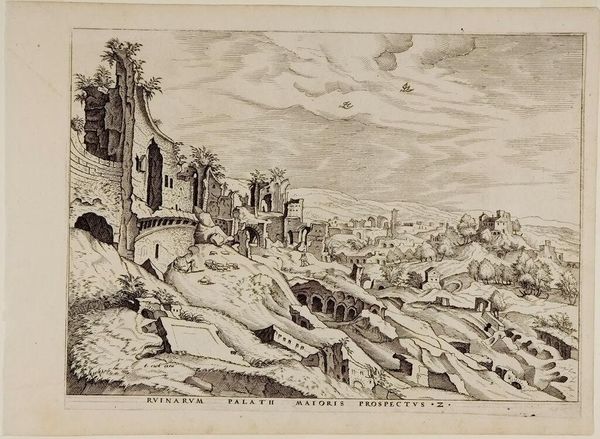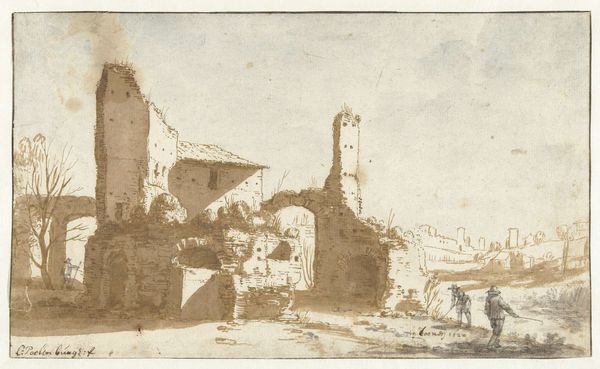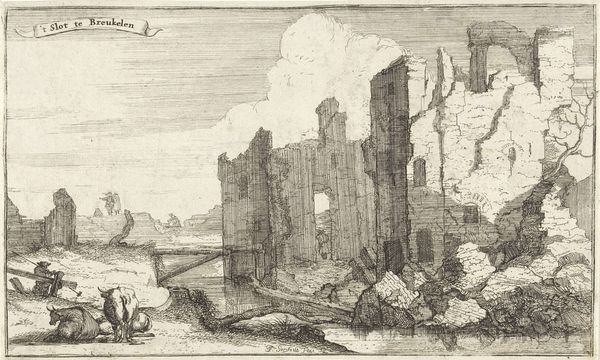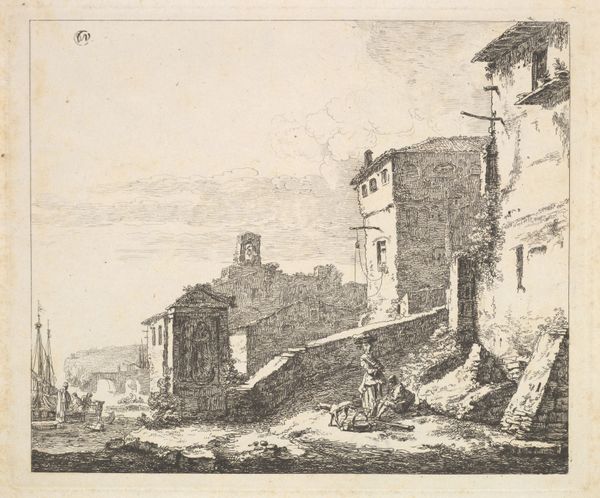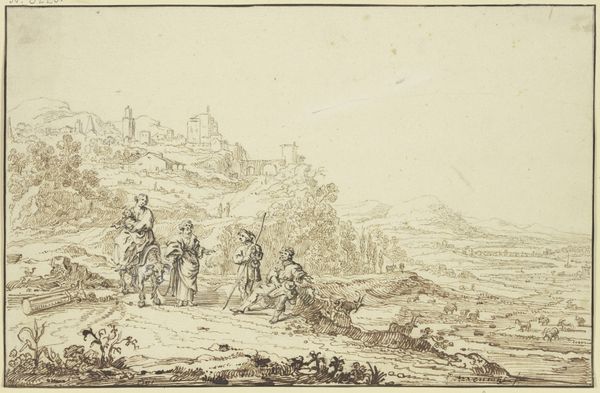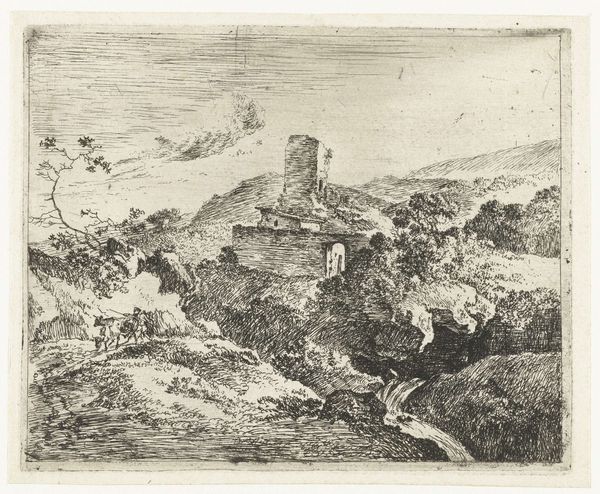
print, etching
#
baroque
# print
#
etching
#
landscape
#
cityscape
Dimensions: height 114 mm, width 194 mm
Copyright: Rijks Museum: Open Domain
Editor: This etching, "Ruins of the Temple of Venus and Roma," was created sometime between 1609 and 1642 by Pieter Bodding van Laer, and it's now at the Rijksmuseum. The landscape feels both epic and intimate; what jumps out at you when you look at it? Curator: It's fascinating how Van Laer uses the ruins. They are not merely stone, but powerful symbols. We see the remnants of Venus, goddess of love, and Roma, the embodiment of the Roman state, juxtaposed with daily life. What does that juxtaposition suggest to you? Editor: Maybe the everyday continuing, regardless of history’s grandeur and decline? There's something melancholy about it. Curator: Precisely! The ruin is a memento mori – a reminder of mortality and the ephemeral nature of earthly power and beauty. It invites contemplation. What’s curious is the inclusion of peasants and animals. Consider how this imagery would resonate with his audience. What kind of memory is he building or deconstructing here? Editor: It makes it more human, less about gods and emperors, and more about ordinary existence. Did people at the time see ruins the same way we do now, as something romantic? Curator: It’s likely there were varying perspectives, much like today. Ruins could represent the faded glory of Rome or the triumph of Christianity over paganism. It depended on one's ideological viewpoint. And Van Laer, by etching this scene, becomes a part of that visual conversation, perpetuating those interpretations, wouldn’t you agree? Editor: I do! It’s incredible how much information can be packed into one image. Now, I see how he creates meaning through what he chooses to show, and how he places these images together to trigger understanding of the world through the language of ruins. Curator: Exactly. The language of ruins and the art of cultural memory, constantly being rewritten and reinterpreted!
Comments
No comments
Be the first to comment and join the conversation on the ultimate creative platform.
